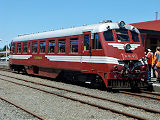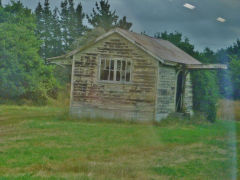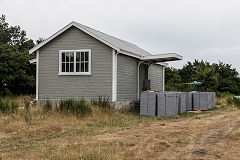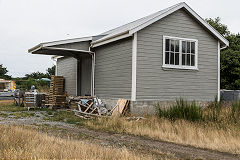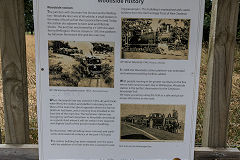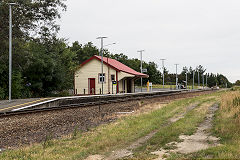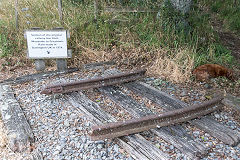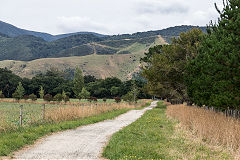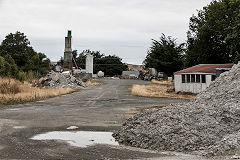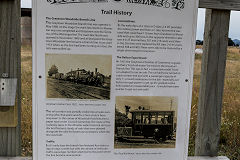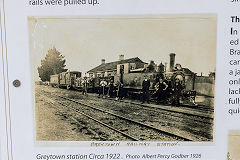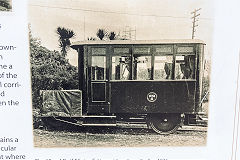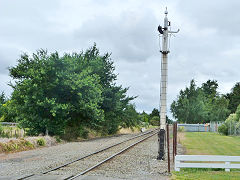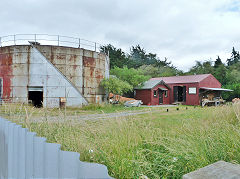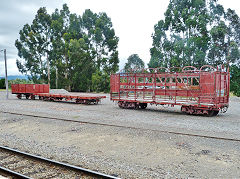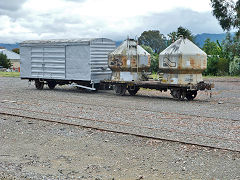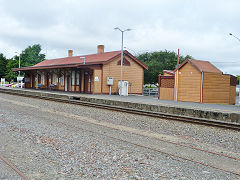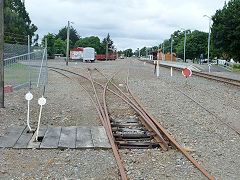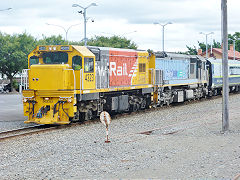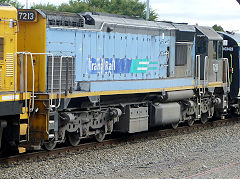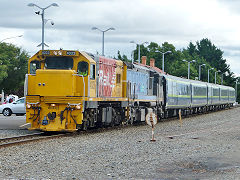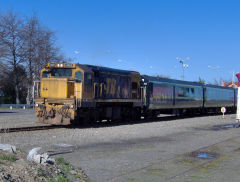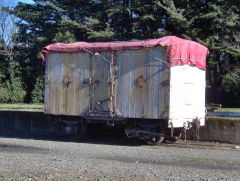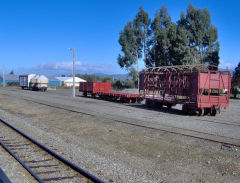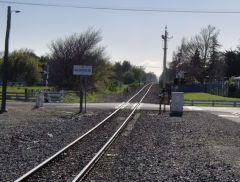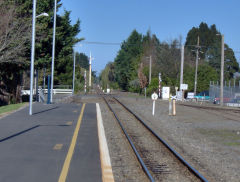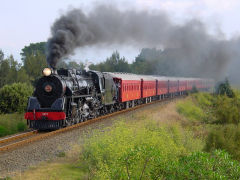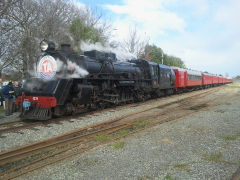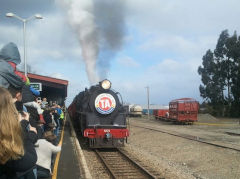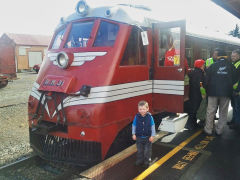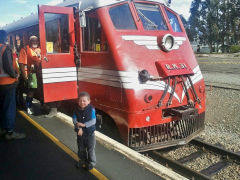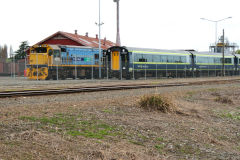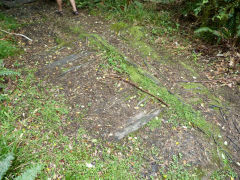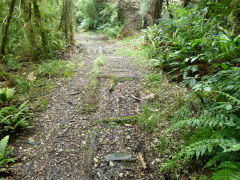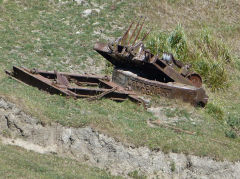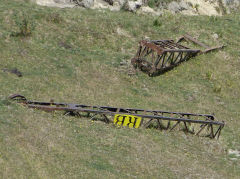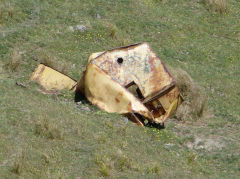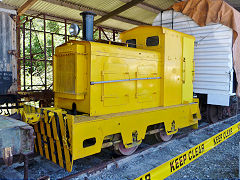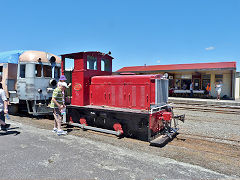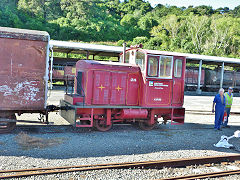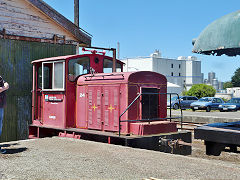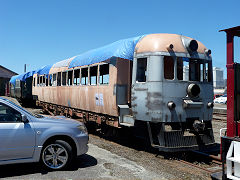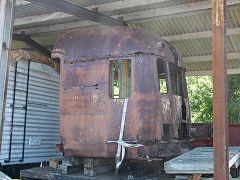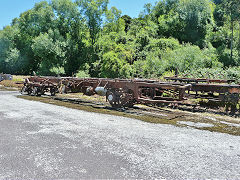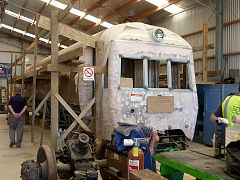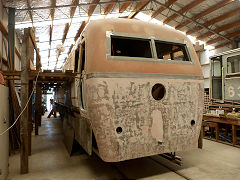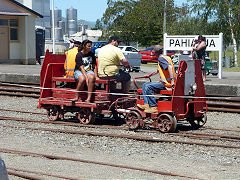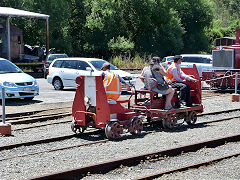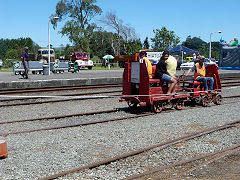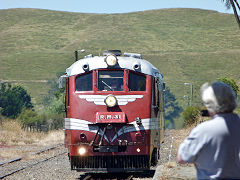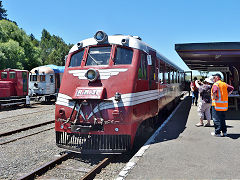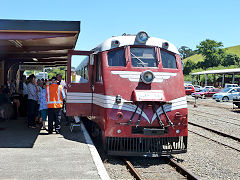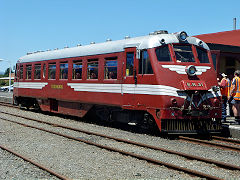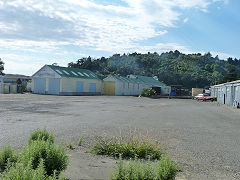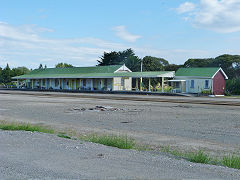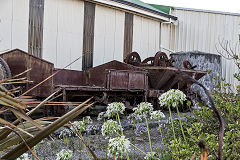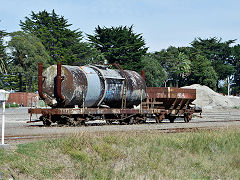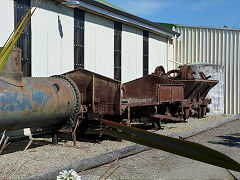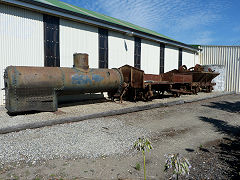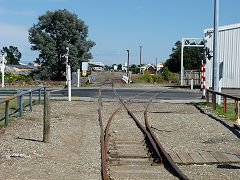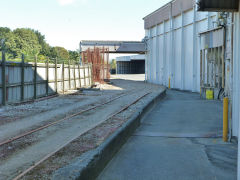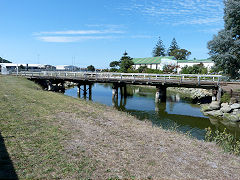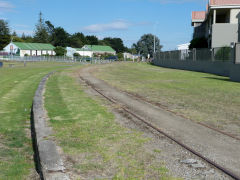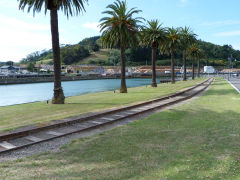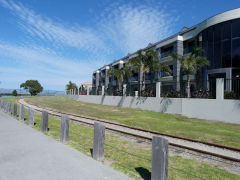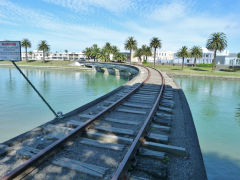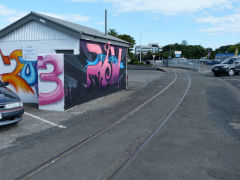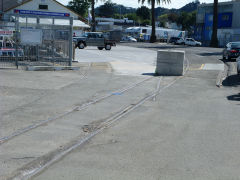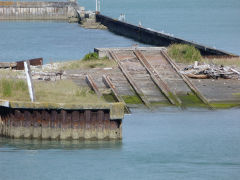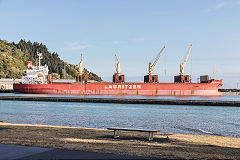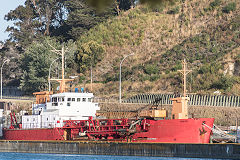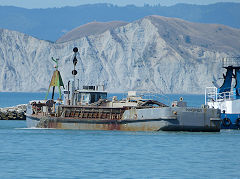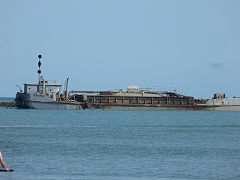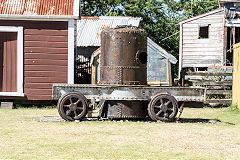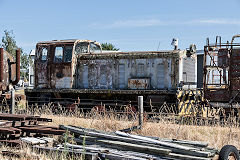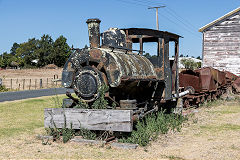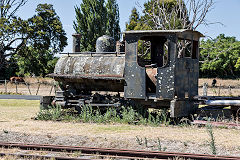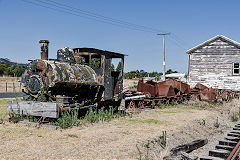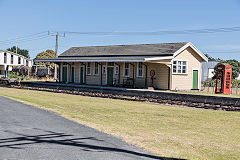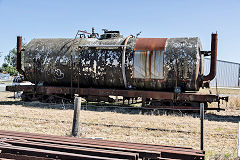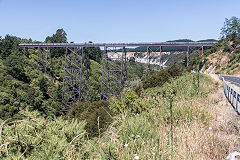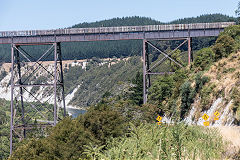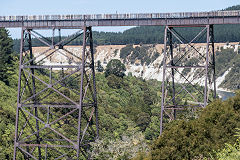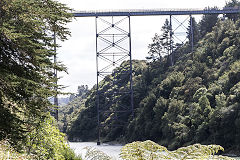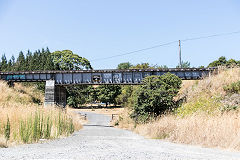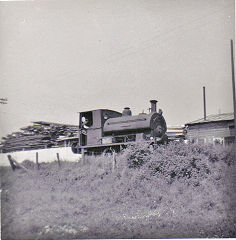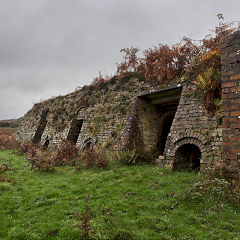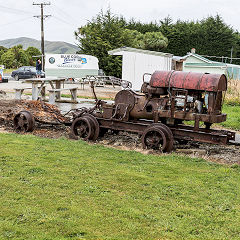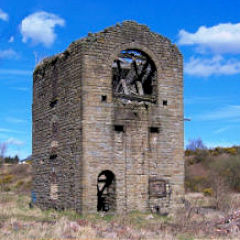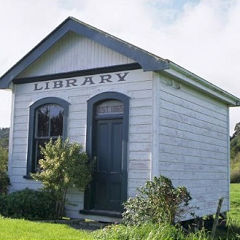The Transport and Industries of New Zealand
Click on the button to go to :-
Click on the thumbnail to enlarge a photo or map and read more about it.
Then click 'Full Size' on the toolbar to see it in all its glory.
Taranaki and Whanganui
Stratford and Dawson Falls
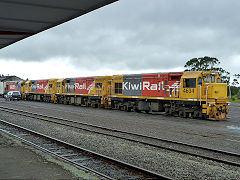
DCs 4409, 4605, 4634 and 4692
|
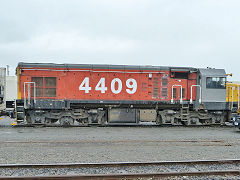
DC 4409 at Stratford Station
|
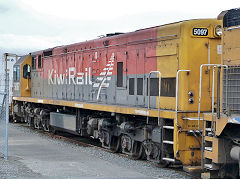
DXB 5097 at Stratford station
|
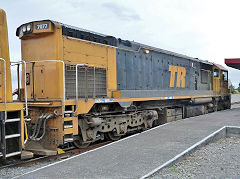
DFT 7077 at Stratford station
|
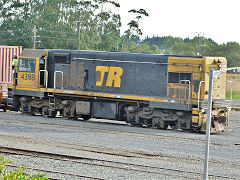
DC 4398 at Stratford station
|
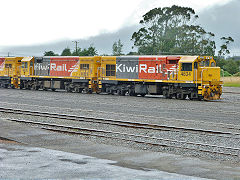
DC 4605, DCP 4634 at Stratford
|

DC 4398, DC 4692 at Stratford
|

DFT 7008 at Stratford station
|

Stratford station, Taranaki
|
|
|
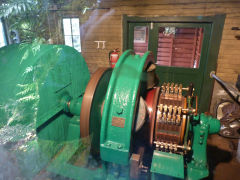
Dawsons Falls Generator, Taranaki
|
Makahu Tunnel
Between Stratford and Whangamomona off SH43 near Strathmore. Constructed in 1907, the timber lining had decayed by 1919 and was replaced by the present concrete pillars. A major upgrade followed in 1998.
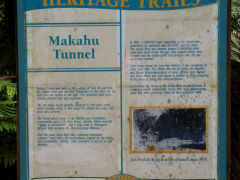
Makahu Tunnel, Taranaki
|
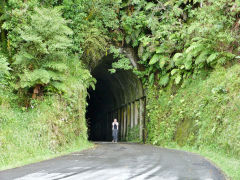
Makahu Tunnel, Taranaki
|
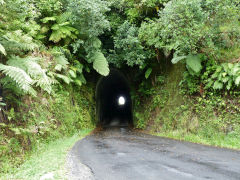
Makahu Tunnel, Taranaki
|
|
Moki Forest and Tunnel on SH43 near Tahora
The old boilers are from 1930s and 1940s logging operations in Moki Forest by Fazackerley's Milling Co
The Moki Tunnel was one of five tunnels proposed by Joshua Morgan (a surveyor in Whangamomona) in the 1890s, before his unfortunate death in 1893. This tunnel was the only one to be constructed out of the five, constructed in 1935-1936 by the Public Works Department, after they had completed metalling the road. Mr. Townley was the engineer, and Mr. Birss the overseer. It was dug using two power jack-hammers driven by a coal-fired steam compressor, which was situated at the western Tahora end of the tunnel. The coal was supplied from the Tangarakau Gorge mine, and was brought to the site by Mr. Ron McCartie, a Tahora settler. As the work on the tunnel continued, the coal-fired compressor was replaced with a diesel-powered air compressor, lessening the need for coal. While the tunnel was being dug, many unique fossils were found. The spoil from the tunnel was carried out by horse and skip on steel rails that had been laid from the tunnel to the tip face, making the road wider on either side and was used to fill where the road presently runs, which has been broadened to a two-lane sealed road.
The tunnel is approximately 180 metres long, and was originally built five metres high. However, with the introduction of stock trucks and trailers onto the road, this was not high enough. In 1985, Colin Boyd (from Inglewood Metal Supplies) lowered the floor a further two metres. About two decades ago, a witty traveller nailed up a sign re-naming the Moki Tunnel as the "Hobbit Hole". This nickname is still used today.The Moki Tunnel is a fine example of the unusual and well thought-out work completed by the road engineers and surveyors of early New Zealand. It has been appreciated b
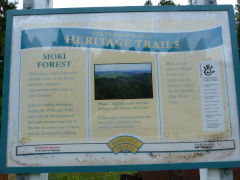
Moki Forest, Taranaki
|
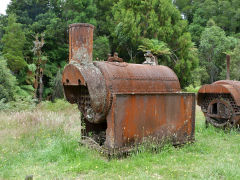
Moki Forest boilers, Taranaki
|

Moki Forest boilers, Taranaki
|
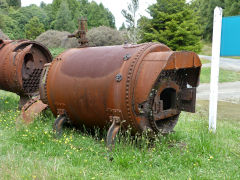
Moki Forest boilers, Taranaki
|
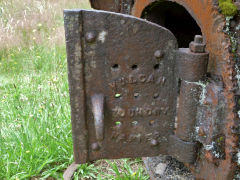
Moki Forest boilers, Taranaki
|

Moki Forest boilers, Taranaki
|
|
|
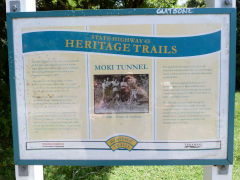
Moki Tunnel, SH43, Taranaki
|
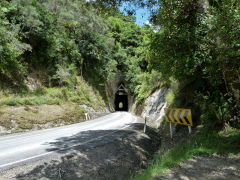
Moki Tunnel, SH43, Taranaki
|
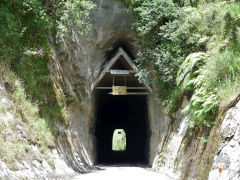
Moki Tunnel, SH43, Taranaki
|
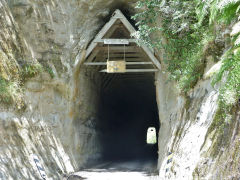
Moki Tunnel, SH43, Taranaki
|
Opunake beach
In 1882 a jetty was built at Opunake on the Southwest coast, followed by a breakwater and wharf in 1924. Unfortunately a ship hit the end of the wharf in 1929 and it was demolished in 1933.
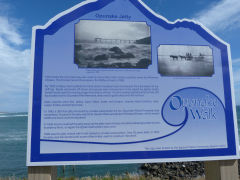
Opunake beach, Taranaki
|
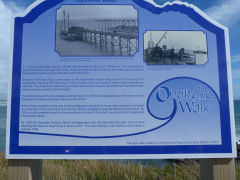
Opunake beach, Taranaki
|
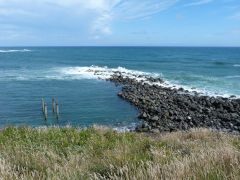
Opunake beach, Taranaki
|
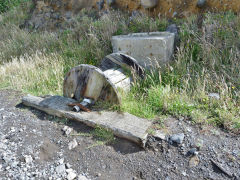
Opunake beach, Taranaki
|
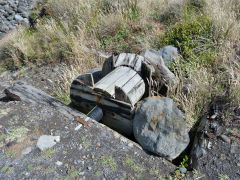
Opunake beach, Taranaki
|

Opunake beach, Taranaki
|
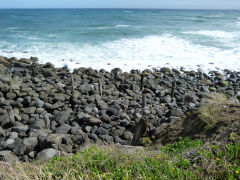
Opunake beach, Taranaki
|
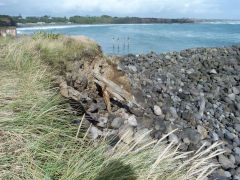
Opunake beach, Taranaki
|

Opunake beach, Taranaki
|
|
|
|
Tangahoe Valley Road bridge and tunnel, near Hawera
In 1937 a new bridge was built over the Tangahoe River on the Tangahoe Valley Road replacing a structure that had been destroyed by floods. It has an arch span of 24.2 metres. This is an interesting bridge, the deck passing through the arch about mid-point, with the legs of the arch anchored into the abutments in a visually impressive manner. This is known as a half-through arch. The bridge was designed for the Hawera County Council by the Public Works Department to give a 2.4m clearance above the highest recorded flood level.
The Tangahoe Tunnel was constructed in 1928. At 160 metres long it's one of the longest of Taranaki tunnels. A plaque inside the eastern portal records the guniting of tunnel in 1954. (Gunite or shotcrete is concrete sprayed under pressure to consolidate walls.) Another plaque at the west portal commemorates the re-opening of the tunnel after repairs in 1997. In 1986 part of the roof collapsed in an earthquake and the tunnel was closed. A deep and unstable cutting alongside, which proved to be often unpassable, served for traffic until the tunnel was repaired and re-opened in 1997.
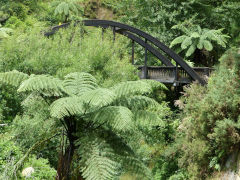
Tangahoe bridge, Taranaki
|
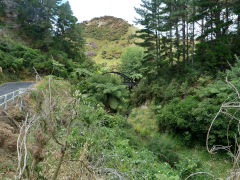
Tangahoe bridge, Taranaki
|
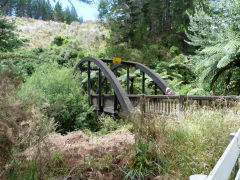
Tangahoe bridge, Taranaki
|

Tangahoe bridge, Taranaki
|
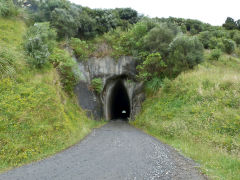
Tangahoe tunnel, Taranaki
|
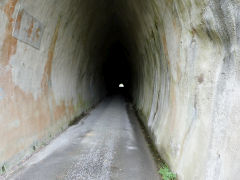
Tangahoe tunnel, Taranaki
|
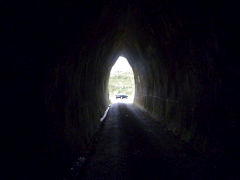
Tangahoe tunnel, Taranaki
|
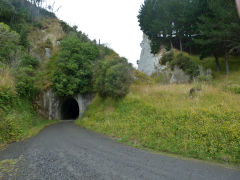
Tangahoe tunnel, Taranaki
|
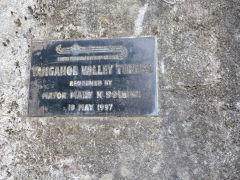
Tangahoe tunnel, Taranaki
|
|
|
|
Wanganui
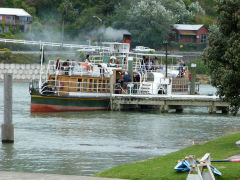
'Waimarie' on the Whanganui River
|
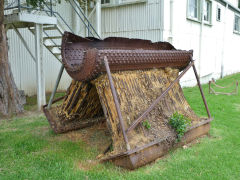
Old marine boiler at Whanganui
|
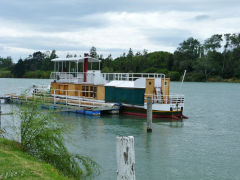
'Wairua' on the Whanganui River
|
|
The North Island Main Trunk Line and beyond
One of the great rail journeys of the world - with an overnight stay at the Tongariro Chateau with complimentary volcano smoking away behind your room - it's just got to be done....
Foxton
'Palmerston' was built in 1872 at Dunedin by R S Sparrow & Co for the Foxton to Palmerston North Railway. Neither the loco or the line were successful so the wooden rails replaced by iron and 'Palmerston' was replaced by 'Opossum', 'Skunk' and 'Wallaby' built by Mills of Wellington. These in turn were replaced by NZR locos and were sold off. 'Palmerston' continued in use on works trains etc until scrapped. 'Opossum' is preserved at Shantytown, South Island and the replica of 'Palmerston' was made in 1993.

'Palmerston' at Foxton
|
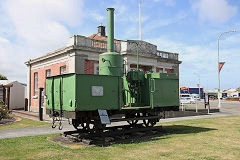
'Palmerston' at Foxton
|
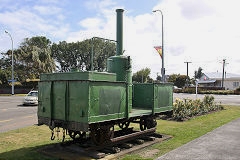
'Palmerston' at Foxton
|
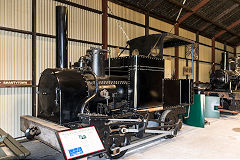
'Opossum' from Foxton
|
Palmerston North
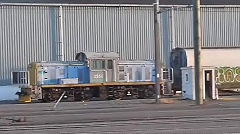
Palmerston North, DSC DSC 2556
|
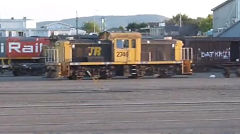
Palmerston North, DSC 2746
|
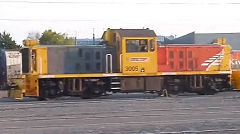
Palmerston North, DSG 3005
|
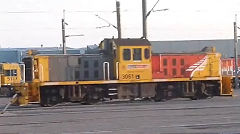
Palmerston North, DSG 3061
|

Palmerston North, DF 5097
|

Palmerston North, DF 5108
|
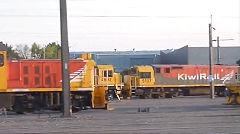
Palmerston North, DF 5137
|
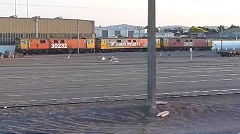
EFs 30157 and 30232
|
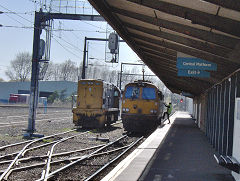
DX 5166 and EF 30013
|

DX 5166 and EF 30013
|
|
|
The Overlander to Auckland
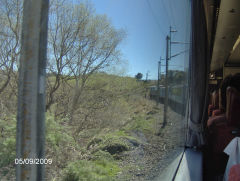
View from the train and EF 30013
|
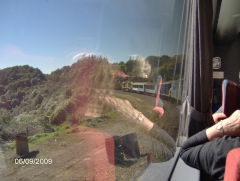
View from the train and DC loco
|
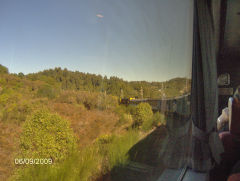
View from the train and DC loco
|
|
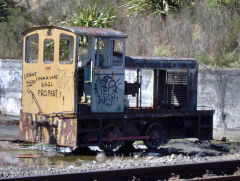
Ohakune, Tr 989, Price 190
|
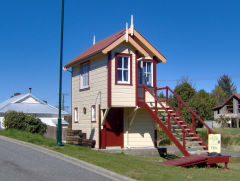
Ohakune signal box
|
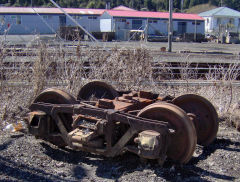
a spare bogie at Ohakune
|
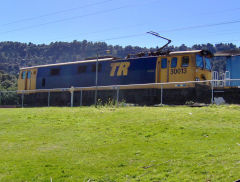
Ohakune, EF 30013
|
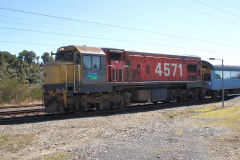
National Park Station, DC 4571
|
|
|
|
Around and about in North Island
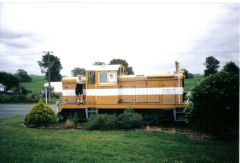
Putaruru Museum, A&G Price 218
|
|

DL 9072 at Waharoa
|
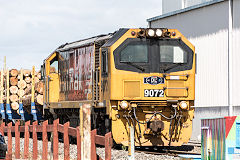
DL 9072 at Waharoa
|
Kawakawa and the Bay of Islands Railway

Auckland breakdown train coach
|
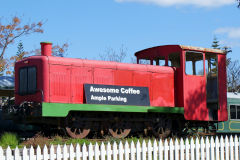
A steam loco once upon a time
|
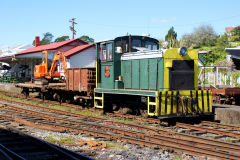
Drewry 2730 of 1967
|

'Gabriel', Peckett 1730 of 1927
|
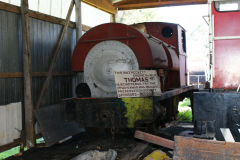
Peckett 1645 of 1924
|
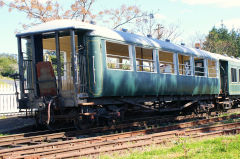
Rotorua Express coach
|

'Ruby' Drewry 3659 of 1973
|
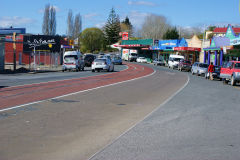
Main Street, Kawakawa
|
White Island Sulpher Works
White Island or Whakaari in the Bay of Plenty contains one of New Zealand’s most active volcanoes. Early in the 20th century it was an important source of sulphur for the manufacture of superphosphate. Mining ended after 10 or 11 men were killed in a landslide in 1914. Some mining resumed in 1923, but eventually ceased in the 1930s when the sulphur was depleted.

White Island Sulpher Works
|
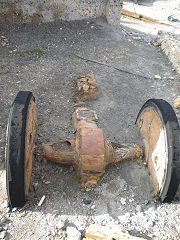
White Island Sulpher Works
|
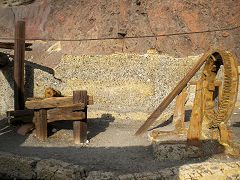
White Island Sulpher Works
|
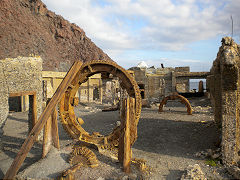
White Island Sulpher Works
|
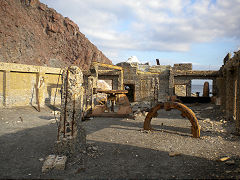
White Island Sulpher Works
|
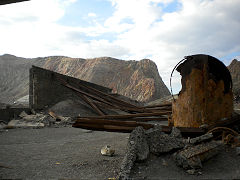
White Island Sulpher Works
|
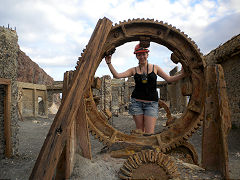
White Island Sulpher Works
|
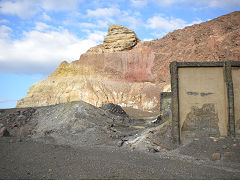
White Island Sulpher Works
|
